Country guides

Things to do in Singapore
Singapore's sightseeing attractions reflect the diverse population which calls the country home. In downtown Singapore, the communities of Little India and the Arab District give an exotic cultural spice to a country ultimately known more for urban planning and a high-tech economy than its history. Similarly, Chinatown stands out with its traditions and vibrant decorations in contrast to a very modern city. The creative achievements of this modernity can be viewed at the Red Dot Design Museum, the many shopping malls and the Gardens by the Bay, a fascinating marriage of technology and nature.
To escape the urban rat race, tourists can enjoy numerous stunning gardens and parks, including the Singapore Botanic Gardens, the Chinese and Japanese Gardens, the Jurong Bird Park and the Singapore Zoo. Probably the best way to experience nature within the city limits is a visit to Bukit Timah Nature Reserve, where swathes of tropical rainforest have been preserved. For others, ferrying between islands can be the best escape. Sentosa Island is a fun theme park with myriad attractions, including beaches, aquariums and amusement parks like Universal Studios Singapore. The more relaxing Palau Ubin Island is interesting for its Malay culture and is an ideal spot to go cycling or hiking along unspoiled beaches and through the forested interior.
Visitors planning a lot of travel around Singapore should consider purchasing the Singapore Tourist Pass, which allows unlimited transport on the bus and train systems.
Raffles Hotel
The Raffles Hotel is a grand Victorian edifice rising from the pavements of the colonial district. Its elegant charm has enticed writers and entertainers such as Somerset Maugham, …
Raffles Hotel
The Raffles Hotel is a grand Victorian edifice rising from the pavements of the colonial district. Its elegant charm has enticed writers and entertainers such as Somerset Maugham, Rudyard Kipling, Joseph Conrad, Alfred Hitchcock, Ernest Hemingway and Charlie Chaplin. Singapore Slings have become the hallmark of the Long Bar and they may not be cheap or as original as they once were but they certainly are tasty. Here ceiling fans whirr above the heads of expatriates and tourists as they sip smart cocktails in superb colonial comfort. The Tiffin Room is best known for its afternoon teas and sumptuous Saturday night buffets. Gin and tonics alongside the odd game of snooker can be enjoyed at the Bar & Billiard. There are about 15 restaurants and bars at the Raffles Hotel and reserving a table for a meal is the best way to experience the place if you are not a resident. Other distractions include an upper-level museum containing vignettes and photographs on the lives of Charlie Chaplin, Elizabeth Taylor, Richard Burton and Noel Coward, as well as a Victorian-style playhouse and numerous specialty shops and restaurants. One of the world's most famous hotels, the Raffles offers luxury, history and impeccable service.
Address 1 Beach Road
Website www.raffleshotel.com
Transport
The hotel is located on Beach Road and can be reached by MRT from City Hall Station
Little India
The first Indian settlers in Singapore arrived with Sir Stamford Raffles in the early 19th century, bringing with them colourful silks, aromatic spices, incense and other accoutrem…
Little India
The first Indian settlers in Singapore arrived with Sir Stamford Raffles in the early 19th century, bringing with them colourful silks, aromatic spices, incense and other accoutrements of Indian culture. They worked on the roads and helped build the infrastructure of the city, settling within the ethnic enclave that has become known as Little India. The area is delineated by the north-south Serangoon Road, which runs parallel to Race Course Road. Its eastern end stretches to Jalan Besar. Temples, busy restaurants, curry spices, jasmine garlands and the exotic hues of silk saris fill the vibrant streets to create a colourful and pungent atmosphere. The colourful buildings make for wonderful photo opportunities and it is fun to do things like get henna tattoos and have your fortune told, or simply shop around for bargains in the many shops. Most people come to Little India for the food, however, which tends to be remarkably cheap and invariably comes in huge portions. Little India is at its best during traditional festivals, particularly the Hindu Festival of Lights, when the area is festooned with decorative lighting displays.
Transport
Little India is a 15-minute walk from the Colonial District, Bencoolen Street or Beach Road. From Orchard Road, bus 65 or 111 to Serangoon Road. By MRT travel to Dhoby Ghaut, and from there on foot or Bus 65 or 111
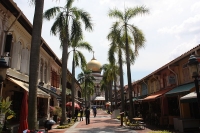
Kampong Gelam and Arab Street
Kampong Gelam is said to have taken its name from the Gelam tribe of sea gypsies who lived in the original Malay village southwest of the Rochor River. Sir Stamford Raffles allotte…
Kampong Gelam and Arab Street
Kampong Gelam is said to have taken its name from the Gelam tribe of sea gypsies who lived in the original Malay village southwest of the Rochor River. Sir Stamford Raffles allotted the area as an ethnic enclave to the Muslim population and it became the focal point for Arab trade and traditional Malay culture in Singapore. Baghdad Street, Muscat Street and Haji Lane resonate with tradition as cane, straw, rattan and pandan leaf goods spill out onto the streets. The variety of fabrics flowing onto the pavements of Arab Street include chiffon, silk, cotton georgette and the batiks of Indonesia and Malaysia. Located between Kandahar and Aliwal streets is the Istana Kampong Gelam. The royal palace was commissioned by Sultan Ali Iskandar Shah, the son of Sultan Hussein, who negotiated the handover of Singapore to Britain. The government gazetted the palace as a national monument in 2015, and has since turned it into the Malay Heritage Centre. Another significant building in the area is the Sultan Mosque. The glistening necks of the domes are decorated with the bases of thousands of glass bottles. It is a wonderful district to stroll through, especially in the morning or the evening.
Transport
The Arab Quarter is a 10-minute walk from Bencoolen Street. Take bus 7 from Orchard Road to Victoria Street, if commuting by MRT, stop at Bugis
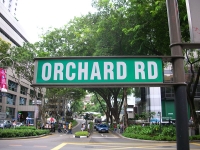
Orchard Road
Singapore certainly is a vibrant place, and in many ways Orchard Road is the city-state's beating heart. The retail and entertainment centre of Singapore, 'Orchard' (as the surroun…
Orchard Road
Singapore certainly is a vibrant place, and in many ways Orchard Road is the city-state's beating heart. The retail and entertainment centre of Singapore, 'Orchard' (as the surrounding area is commonly known) is as popular with locals as it is with foreign visitors, and for many years has been Singapore's prime tourist hotspot. At the southern end of Orchard Road you will find The Istana (the official residence of the Singaporean president), and at the northern end the immensely popular Botanic Gardens; while in between there is a pulsing street lined with pedestrian malls and department stores, offering some of the best shopping opportunities in Asia. Must-see places include Tangs, the first upmarket department store in Singapore, and the Tanglin Mall, which features an enormous food court that is incredibly popular with tourists and expatriate workers in Singapore. There is an almost inexhaustible range of stores and boutiques in Orchard Road, and plenty of upmarket cafes and restaurants serving international cuisine of the highest order. Make sure to leave some room in your suitcase, as shopping in Orchard Road is an irresistible tourist activity in Singapore.
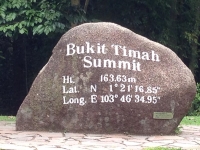
Bukit Timah Nature Reserve
Singapore and Rio de Janeiro are the world's only two cities to contain primary rainforest within their boundaries. Bukit Timah is located seven miles (12km) from Singapore's centr…
Bukit Timah Nature Reserve
Singapore and Rio de Janeiro are the world's only two cities to contain primary rainforest within their boundaries. Bukit Timah is located seven miles (12km) from Singapore's centre and provides a wonderful opportunity to experience the region's tropical rainforest without travelling into rural areas. It is a 164-hectare (405-acre) reserve preserving a variety of tree and animal species including flying lemurs, long-tailed macaque monkeys and anteaters. Designated walking and cycle trails undulate through the dense jungle and its highest point is marked by Bukit Timah at 538ft (164m). Visitors should resist the natural urge to just automatically take the main route to the summit, as the side routes and detours often traverse the best scenery. The trails are very well-maintained and visitors can choose to go for a gentle stroll or a high intensity hike depending on fitness levels. Those hoping to climb Bukit Timah should note that the ascent is steep with many steps. It is best to start exploring early in the morning to avoid the midday heat, but the forest is usually pleasantly cool compared to the city. Park authorities warn travellers not to explore the park when it is stormy as falling trees and branches can be very dangerous.
Website www.nparks.gov.sg/gardens-parks-and-nature/parks-and-nature-reserves/bukit-timah-nature-reserve
Transport
SBS bus 170, or TIBs 67, 75, 171, 173, 184, 852 and 961
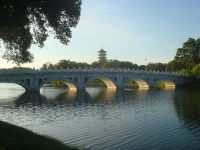
Chinese and Japanese Gardens
Traditional Chinese and Japanese landscape design is gorgeously represented in these neighbouring gardens, which provide a tranquil retreat from the city and take hours to explore …
Chinese and Japanese Gardens
Traditional Chinese and Japanese landscape design is gorgeously represented in these neighbouring gardens, which provide a tranquil retreat from the city and take hours to explore thoroughly. The grounds are huge and immaculately well-maintained and will delight gardening enthusiasts. The Imperial Sung Dynasty style is clipped to perfection within the 13-hectare (33-acre) Chinese Garden. It boasts the world's largest Suzhou-style Bonsai garden outside of China, containing more than 1,000 plants. There is also a seven-storey pagoda which affords views of the city and a number of graceful bridges spanning the water. The symmetry and simplicity of Zen aesthetics is the motif of the Japanese Garden with its peaceful rock gardens and summerhouses. It is interesting to compare the landscaping traditions of the two cultures, and the difference is so striking that you are immediately aware when you move from one to the other. There is a wealth of bird life in the gardens and visitors will likely see animals like monitor lizards, squirrels and fish. There is also a Live Turtle and Tortoise Museum which is a great stop for those travelling with kids in Singapore. You can buy drinks in the gardens but no food is available so pack your own if you want to make a day of it.
Address 1 Chinese Garden Road
Transport
Take the MRT to the Chinese Garden stop
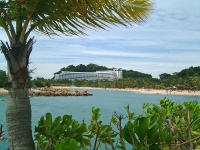
Sentosa Island
This theme park island is a popular weekend excursion and one of the most visited attractions in Singapore, receiving millions of visitors a year. A day's fun could easily turn int…
Sentosa Island
This theme park island is a popular weekend excursion and one of the most visited attractions in Singapore, receiving millions of visitors a year. A day's fun could easily turn into an overnight stay in any one of the hotels or camping sites. The island is enveloped by a high-speed monorail and linked to downtown Singapore by a causeway and cable car system. Entertainment ranges from soaking up the sun on the imported-sand beaches to visiting a variety of entertainment areas. From a moving walkway one can experience the sea life of The Underwater World and Dolphin Lagoon. The images on display in the Singapore Exhibition explore Singapore's history in life-size dioramas. On the furthest western point of the island lies Fort Siloso, from which Singapore guarded its territory against invading Japanese forces. Other attractions include the Merlion, the Musical Fountain and the Sentosa Luge.
Website https://www.sentosa.com.sg/
Transport
The orange Sentosa bus leaves from the HarbourFront Bus interchange
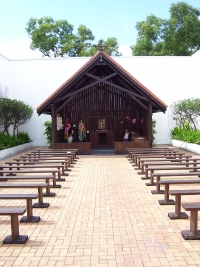
Changi Museum
It was here, during World War II, that Allied Prisoners Of War soldiers (POWs) were subjected to harsh treatment at the hands of their Japanese captors. Changi Prison is still in u…
Changi Museum
It was here, during World War II, that Allied Prisoners Of War soldiers (POWs) were subjected to harsh treatment at the hands of their Japanese captors. Changi Prison is still in use as a correctional facility and it is now the place of execution for convicted drug offenders. Half a mile (1km) from the old site, next to the prison, is the new Changi Chapel and Museum. The complex is dedicated to all those who suffered and died in Singapore during the war and the war graves are a sombre and moving reminder of the sacrifice made by many. The display of photographs, letters, drawings and other personal artefacts in the museum are a profound tribute to the tragic legacy of the Japanese occupation. During the occupation, which spanned three and a half years, more than 50,000 civilians and soldiers were captured and imprisoned. Visitors have access to a variety of videos and literature relating to the war years. A British POW returned to the museum to faithfully recreate the chapel murals which gave the prisoners hope and comfort during their incarceration and seeing them is one of the highlights of the trip. To peruse the artefacts properly you will need at least two hours.
Address 1000 Upper Changi Road North
Website www.changimuseum.sg
Transport
SBS bus 2 from Tanah Merah MRT Station or SBS bus 29 from Tampines MRT Station
Haw Par Villa
Haw Par Villa is a theme park containing more than a thousand statues and 150 giant dioramas depicting scenes and characters from Chinese mythology and folklore. Located along Pasi…
Haw Par Villa
Haw Par Villa is a theme park containing more than a thousand statues and 150 giant dioramas depicting scenes and characters from Chinese mythology and folklore. Located along Pasir Panjang Road, Haw Par Villa was previously known as Tiger Balm Gardens and subsequently renamed after its original owners. The Aw brothers, Boon Haw and Boon Par (who made their fortune from the well-known Tiger Balm ointment) opened the park in 1937. This is an odd tourist attraction which will appeal to those who enjoy the weird and unique. Some of the statues are grotesque and all are gaudy. The coup de grâce of the park is the Ten Courts of Hell exhibit, which features gruesome depictions of torture, pain, suffering and all sorts of physical degradations in accordance with the descriptions of hell in Chinese legend. There are also milder attractions like mythical creatures, sumo wrestlers and the animals of the zodiac. It is a bit rundown but provides laughs and some wonderful photo opportunities and children love the bright colours and magical stories - although if you are visiting with kids you may want to keep them out of the Ten Courts of Hell, which is enclosed in its own area and can be easily avoided.
Address 262 Pasir Panjang Road
Thian Hock Keng Temple
The 'Temple of Heavenly Bliss', the Thian Hock Keng Temple is the oldest and most important of the Chinese Hokkien temples in Singapore. Construction was completed in 1842, in a tr…
Thian Hock Keng Temple
The 'Temple of Heavenly Bliss', the Thian Hock Keng Temple is the oldest and most important of the Chinese Hokkien temples in Singapore. Construction was completed in 1842, in a traditional southern Chinese architectural style, with not a single nail used in its construction. The temple stands where Singapore's waterfront used to be before the land was reclaimed and the main temple is dedicated to Mazu, the Taoist goddess of the sea, to whom Chinese immigrants gave thanks for a safe journey to Singapore. The elaborate doors are guarded by tigers, lions and Door Gods and beyond this gateway there are two courtyards and a series of shrines and pagodas. Those who want to pray should ask for assistance in selecting the right altar or shrine for the kind of prayer they want to make. The temple contains many beautiful statues and altars, and a centre for the creative arts that hosts dance, acting, and music lessons. There is a pagoda behind the temple gate that makes a perfect spot for a cool drink in the shade. The temple is generally quiet and tranquil, unlike many others tourists might visit, and although it isn't a must-see for visitors any traveller interested in such things should find it fascinating.
Address 158 Telok Ayer Street
Website www.thianhockkeng.com.sg
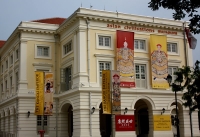
Asian Civilisations Museum
The Asian Civilisations Museum is one of Singapore's finest, most comprehensive museums and one of the most popular tourist attractions in the city. Its permanent collection consis…
Asian Civilisations Museum
The Asian Civilisations Museum is one of Singapore's finest, most comprehensive museums and one of the most popular tourist attractions in the city. Its permanent collection consists of furniture, jade, porcelain, fine arts, and other artefacts covering 5,000 years of the region's history, with exhibitions illustrating Chinese, Islamic, and South Indian culture. As the name suggests, the museum explores broader Asian cultures and histories, rather than just that of Singapore. Some of the artefacts are genuinely beautiful and the exhibitions provide great insight into trade and exploration in Asia, documenting the meeting points of various cultures. There are also regular temporary exhibitions which can be extremely impressive. English audio guides are available, with headphones provided, and free guided tours in English are available from Monday to Friday, usually at about 11am and 2pm, on Friday evenings at 7pm, and on Saturdays and Sundays at 11am, 2pm and 3pm. On Friday nights, during the extended opening hours, tickets are half price. There is a museum gift shop and a pleasant restaurant next door, perfect for a drink or a bite after your visit. The museum is at its most pleasant on mornings during the week, when it is not crowded.
Address 1 Empress Place
Website www.acm.org.sg
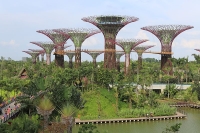
Gardens by the Bay
Singapore's Gardens by the Bay consists of three distinct waterfront gardens in the city's Marina Bay area. The initiative was started as a means to transform Singapore from a mere…
Gardens by the Bay
Singapore's Gardens by the Bay consists of three distinct waterfront gardens in the city's Marina Bay area. The initiative was started as a means to transform Singapore from a mere 'Garden City' into a 'City in a Garden' and is intended to provide a holistic and sustainable way to keep Singapore green, and to provide its inhabitants with outdoor areas where they can relax, exercise and picnic in communion with nature. The Gardens themselves have a couple of interesting features, not least of which are the space-age Supertrees - tree-like mechanical structures that reach up to 165 feet (50m) high, and which harness solar energy to perform a multitude of functions such as planting, shading, managing rainwater resources and even acting as the 'lungs' of the Gardens' immense cooling system. There are also horticultural-themed gardens featuring exotic ferns and orchids, which aim to educate the public about the preciousness of natural resources. A true 'Garden of the Future', visitors to Singapore should check out the Gardens by the Bay for their technological interest alone. The vast lawn area is often used for outdoor events like live music concerts and is a wonderful venue. The incredible Cloud Forest is another highlight, including the highest indoor waterfall in the world. There are about 10 restaurants in the grounds, many with breathtaking views.
Address Marina Bay
Website www.gardensbythebay.com.sg/en/home.html
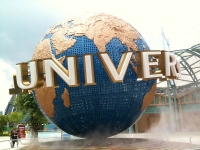
Universal Studios Singapore
Drawing an astounding two million visitors in its first nine months open, the theme park and resort area of Universal Studios Singapore is proving to be as popular as its counterpa…
Universal Studios Singapore
Drawing an astounding two million visitors in its first nine months open, the theme park and resort area of Universal Studios Singapore is proving to be as popular as its counterparts in the USA. Located on Sentosa Island, home to all of Singapore's most famous holiday resorts, Universal Studios Singapore is ideal for family vacationers looking to treat their children to a full day of exciting rides, delicious treats and non-stop excitement. The theme park is divided into seven distinct zones, each featuring their own themed rides and attractions: Hollywood, New York City, Ancient Egypt, Lost World, Madagascar, Far Far Away and, pick of the bunch, Sci-Fi City. There is also an Aquarium and a Marine Park on-site, numerous 3D theatres, a huge array of restaurants and cafes, and plenty of stalls and shops selling official Universal Studios merchandise. Singapore is in many ways a technological marvel of a city, and Universal Studios is a fitting place to experience its unique talent for high-tech entertainment. Exciting rides include the Battlestar Galactica suspended roller coaster, the Revenge of the Mummy roller coaster, and the Jurassic Park Rapids Adventure. There are also numerous rides designed for smaller children and tons of fun performances and themed restaurants.
Address Sentosa Island
Website https://www.rwsentosa.com/en/attractions/universal-studios-singapore/explore


